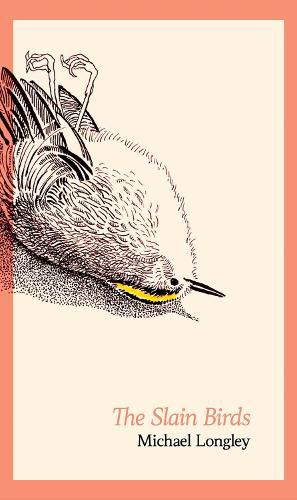Readings Newsletter
Become a Readings Member to make your shopping experience even easier.
Sign in or sign up for free!
You’re not far away from qualifying for FREE standard shipping within Australia
You’ve qualified for FREE standard shipping within Australia
The cart is loading…






Michael Longley’s new collection takes its title from Dylan Thomas– for the sake of the souls of the slain birds sailing. The Slain Birds encompasses souls, slayings, and many birds, both dead and alive. The first poem laments a tawny owl killed by a car. That owl reappears later in Totem, which represents the book itself as a star-surrounded totem pole/ With carvings of all the creatures.
Slain birds exemplify our impact on the creatures and the planet. But, in this book’s cosmic ecological scheme, birds are predators too, and coronavirus is the merlin we cannot see. Longley’s soul-landscape seems increasingly haunted by death, as he revisits the Great War, the Holocaust, and Homeric bloodshed, with their implied counterparts today. Yet his microcosmic Carrigskeewaun remains a precarious home for the human family. It engenders Otter-sightings, elvers, leverets, poetry. Among Longley’s images for poetry are crafts that conserve or recycle natural materials–carving, silversmithing, woodturning, embroidery–suggesting the versatility with which he remakes his own art.
$9.00 standard shipping within Australia
FREE standard shipping within Australia for orders over $100.00
Express & International shipping calculated at checkout
Michael Longley’s new collection takes its title from Dylan Thomas– for the sake of the souls of the slain birds sailing. The Slain Birds encompasses souls, slayings, and many birds, both dead and alive. The first poem laments a tawny owl killed by a car. That owl reappears later in Totem, which represents the book itself as a star-surrounded totem pole/ With carvings of all the creatures.
Slain birds exemplify our impact on the creatures and the planet. But, in this book’s cosmic ecological scheme, birds are predators too, and coronavirus is the merlin we cannot see. Longley’s soul-landscape seems increasingly haunted by death, as he revisits the Great War, the Holocaust, and Homeric bloodshed, with their implied counterparts today. Yet his microcosmic Carrigskeewaun remains a precarious home for the human family. It engenders Otter-sightings, elvers, leverets, poetry. Among Longley’s images for poetry are crafts that conserve or recycle natural materials–carving, silversmithing, woodturning, embroidery–suggesting the versatility with which he remakes his own art.